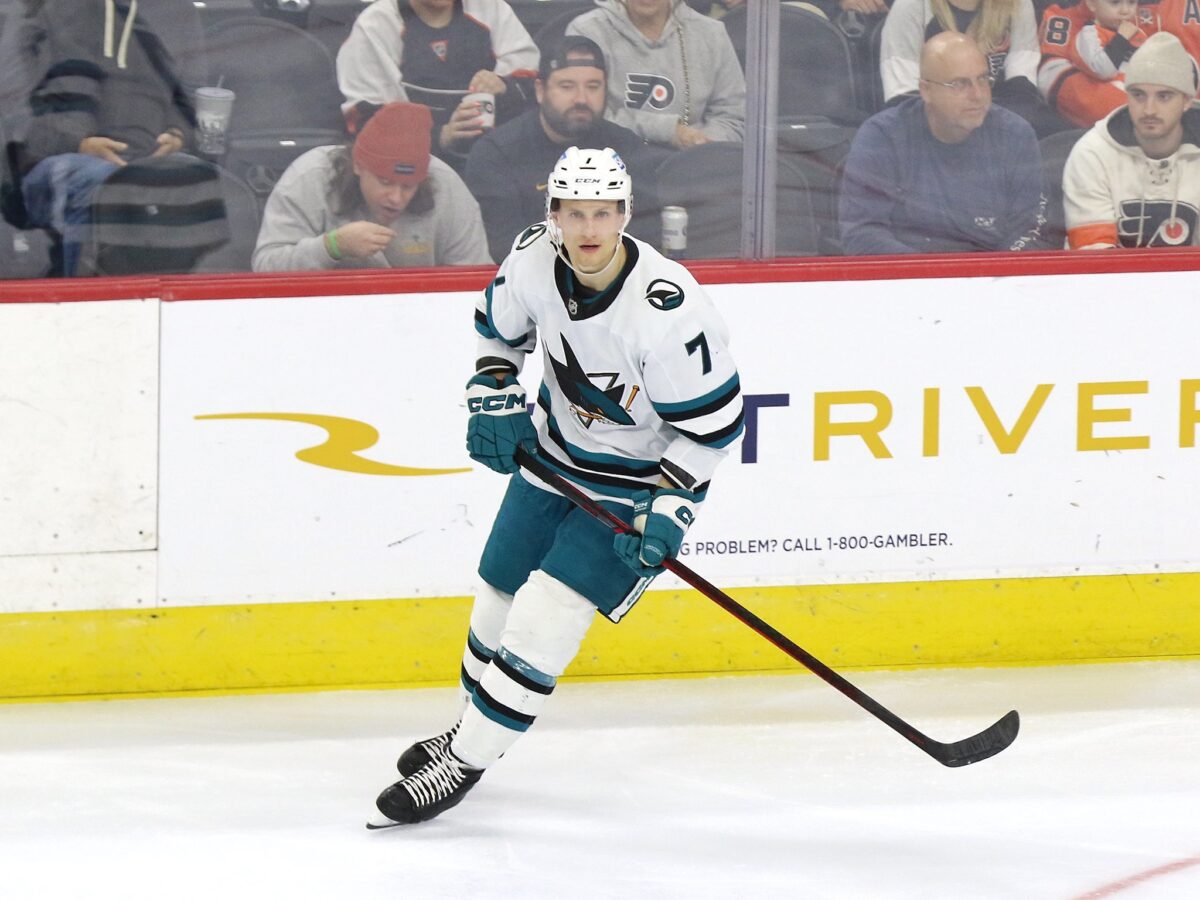The San Jose Sharks have posted a record of 0-2-1 through three games, taking tough losses to three of the best teams in the NHL. While it’s still too early to make any sweeping judgments, a few small patterns are beginning to emerge. In the case of the Sharks, we are starting to understand how their special teams might function this season, and the results are certainly varied. While the penalty kill has shown a lot of promise, the power play isn’t fully cohesive yet. By understanding why, we can gain a sense of where improvements can be made — and how those units could perform throughout the rest of the season.
Sharks’ Penalty Kill Remains Solid From Last Season
Despite their overall defensive struggles in 2022-23, the Sharks had a very strong penalty-killing season. After three games this season, the results are largely the same — with one caveat. But let’s start by talking about the good stuff.
In their first two games, the Sharks didn’t allow any power play goals out of six chances. Regardless of which four skaters were on the ice, they constantly followed their assignments, put pressure on puckhandlers and hustled to loose pucks to execute clearances. Having continuity with returning penalty-killers such as Nico Sturm helps a lot, and newcomers like Jan Rutta have stepped up as well. On the rare occasions where opposing power plays got a clean look at the net, goalies Kaapo Kahkonen and Mackenzie Blackwood made the necessary saves.

Game three against the Carolina Hurricanes was less successful, with San Jose conceding three power-play goals on seven penalty kills. But this had less to do with specific mistakes made by the group and more with the sheer amount of penalty killing they did.
Penalty killing is exhausting, and having to do it constantly will wear a unit down over the course of a game. When the shorthanded group has to take the ice seven times in a single game as their teammates keep incurring penalties, they are likely to make more mistakes as the game goes on. Sure enough, two of Carolina’s three power-play goals came in the third period. Most penalty-killing units can’t handle that kind of volume, and this season’s Sharks are no exception.
It’s unrealistic to ask the Sharks to never commit penalties, but if they can do so at a league-average rate, the penalty kill should continue to be a strength for the team.
Sharks’ Power Play Is a Work in Progress
Through two games, San Jose’s power play was as dysfunctional as the penalty kill was cohesive. Not only did they go 0-for-6 on power-play chances, but most of the opportunities didn’t come even close to finding the net. Passes were consistently off the mark, attempts to reenter the zone were shaky at best, and the skaters never established the kind of rhythm needed to generate good looks.
Related: Sharks’ Team Speed Is a Clear Issue So Far
These struggles appear to be the byproduct of the power play’s construction. Many of the players on the unit have never played together before this season, or only played together briefly, and it shows. Right now, they simply don’t have the chemistry and familiarity needed for a smooth power play. The departure of point man Erik Karlsson just makes the game plan more difficult, leading to some unconventional lineups with the man advantage.
Against the Hurricanes, the Sharks showed some progress with two power-play goals on six chances, which again can be partially attributed to the exhaustion of Carolina’s penalty kill. But they also showed their shortcomings by allowing a shorthanded goal for the first time this season. In spite of this, the two goals can serve as momentum and motivation for the group to improve. Through three games, it’s clear they have a lot of room for growth.
Lineups May Change as Season Continues
Both the penalty kill and power play will change for the Sharks as the season goes on. The latter could obviously use some lineup experimentation, but players could get traded or injured. They’ve played just three games out of 82, and new circumstances will emerge as the season continues. But thus far, two things are clear: the penalty kill has a solid foundation, and the power play is very much in development.
